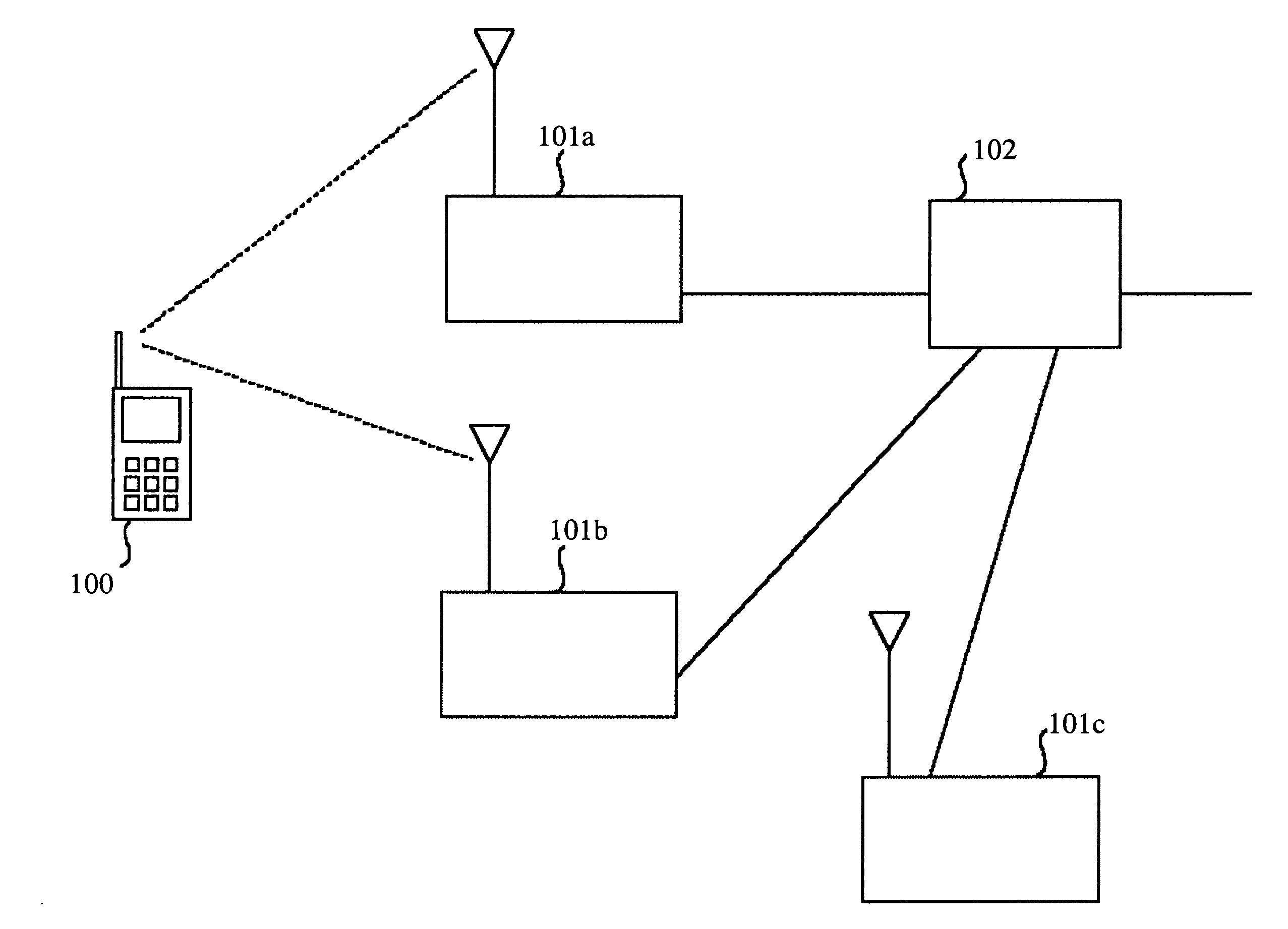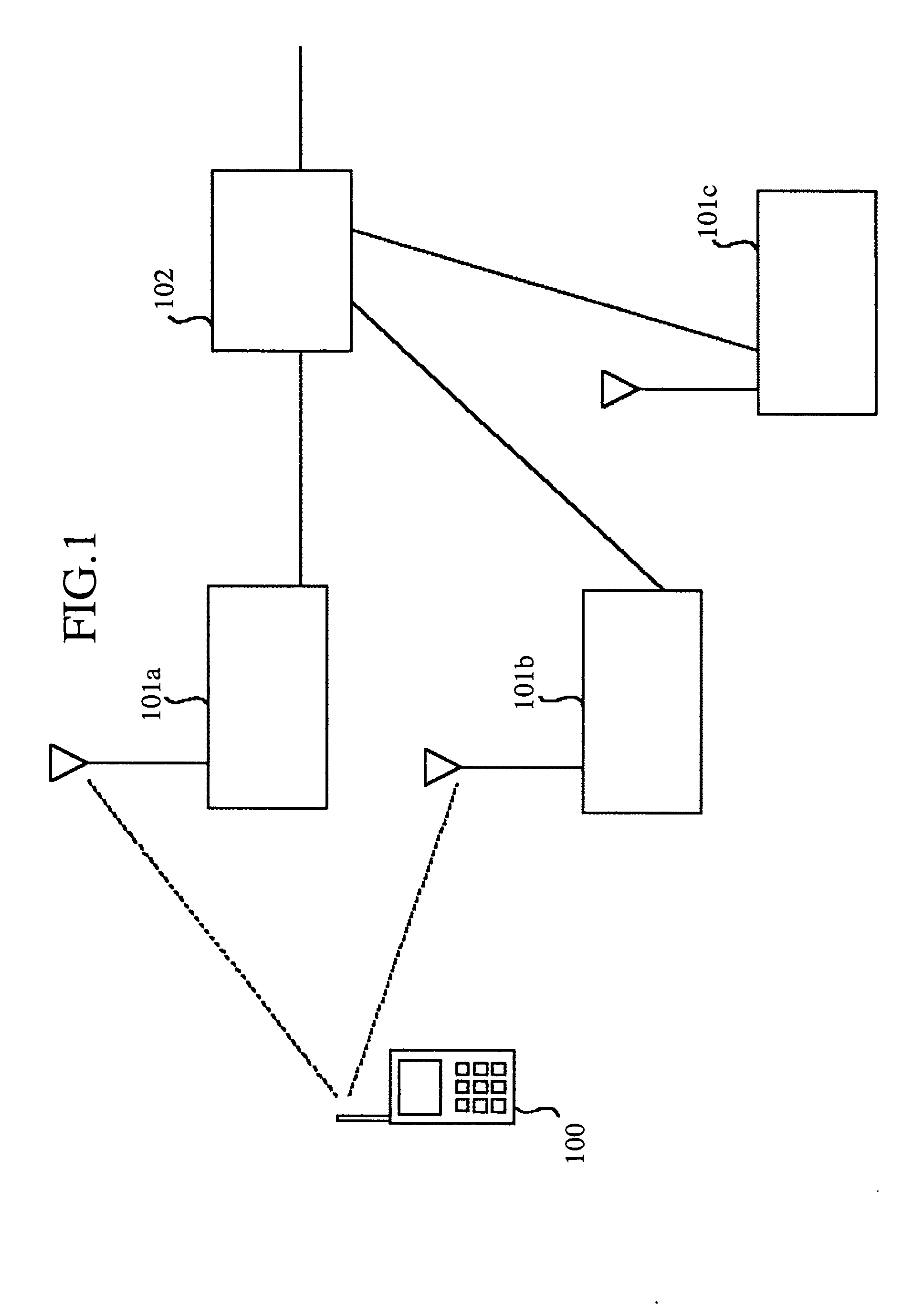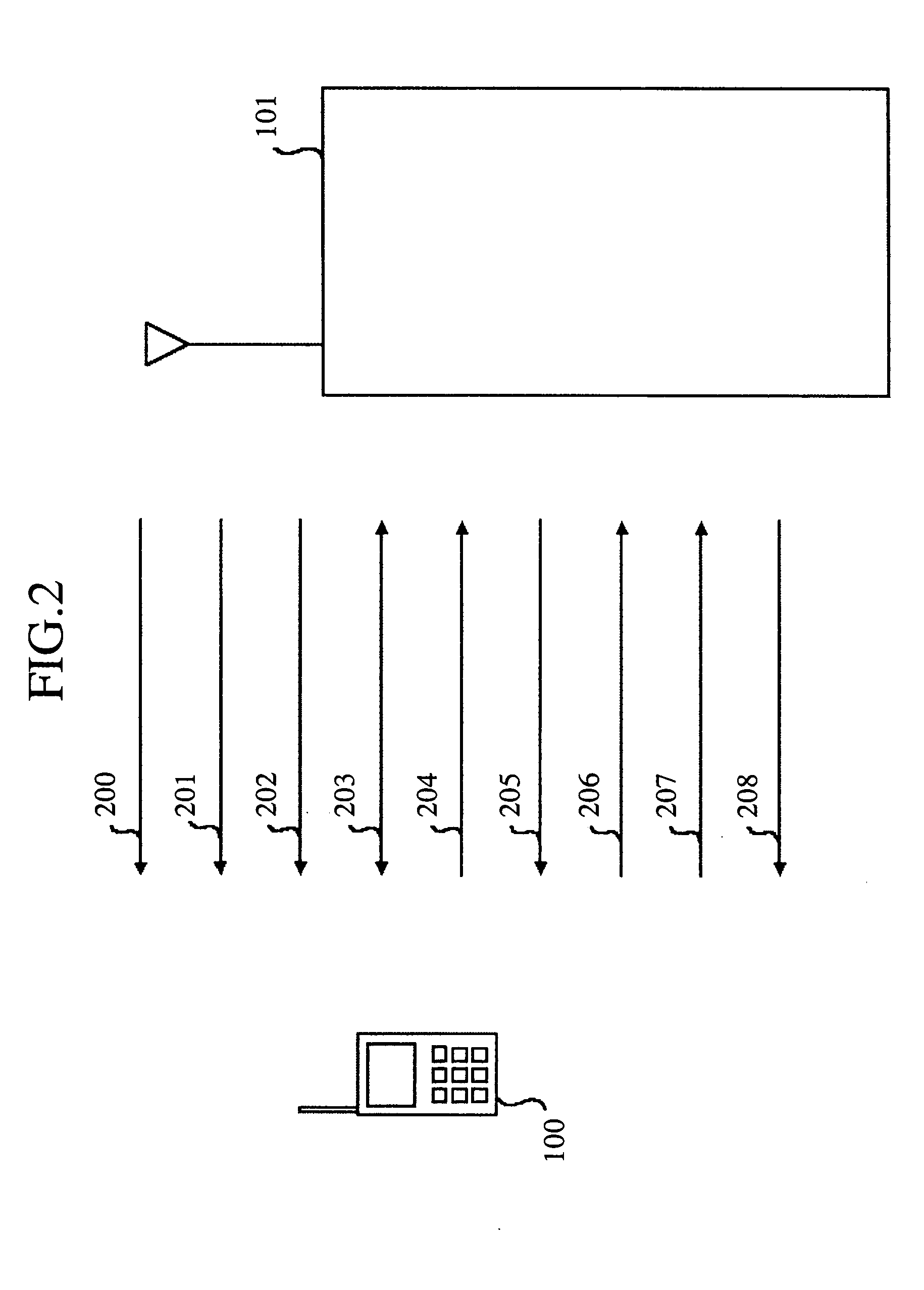Base station, mobile communication terminal equipment, and primary cell determination method
a mobile communication terminal and base station technology, applied in the direction of electrical equipment, wireless commuication services, connection management, etc., can solve the problems of insufficient communication quality of downlink transmission lines, large amount of interference in the base station, and large power which the terminal uses to transmit data, so as to improve the throughput of the whole system, secure the communication quality of uplink transmission lines, and improve the effect of the whole system
- Summary
- Abstract
- Description
- Claims
- Application Information
AI Technical Summary
Benefits of technology
Problems solved by technology
Method used
Image
Examples
embodiment 1
[0059]FIG. 1 is an explanatory diagram showing the structure of a packet communication system. A terminal 100 is a device which the user uses. The terminal 100 communicates with one or more of a plurality of base stations 101a, 101b, and 101c by radio. The base stations 101a, 101b, and 101c are connected to a network (i.e., a public network or the like) via a base station control apparatus 102. By using such a system configuration, the terminal 100 can carry out processing which is called a software handover (Soft Hand Over, which is referred to as SHO from here on) of holding a radio link with two or more base stations. In a W-CDMA system, the terminal 100 is referred to as UE (User Equipment), each base station 101 is referred to as Node-B, and the base station control apparatus 102 is referred to as RNC (Radio Network Controller). In a system in which high-speed uplink packet communications are carried out, a specific base station may take charge of scheduling for terminals. Ther...
embodiment 2
[0099]In embodiment 1, in order to appropriately carry out the primary cell determination process at a time when a link imbalance has occurred, each base station carries out the determination process of determining the primary cell in consideration of the communication quality of the uplink transmission line and that of the downlink transmission line. As an alternative, the terminal can be so constructed as to perform the primary cell determination process in consideration of the communication quality of the uplink transmission line and that of the downlink transmission line. FIG. 15 is a block diagram showing the structure of a terminal according to embodiment 2 of the present invention. In FIG. 15, a primary cell determination unit 319 is the one which receives state information on the state of the radio uplink, and which selects a base station which has a communication quality in its radio downlink which satisfies a scheduling grant condition which is set in advance. The primary ...
embodiment 3
[0117]In accordance with above-mentioned embodiment 2, the terminal determines the primary cell in consideration of both the communication quality of the uplink transmission line and the communication quality of the downlink transmission line, and transmits packet data to the base station according to scheduling information from the base station which has been determined to be the primary cell, as previously explained. A terminal of this embodiment which will be explained below selects an appropriate HARQ (Hybrid Automatic Repeat reQuest) method in order to ensure an optimal communication quality in the uplink transmission line, thereby improving the throughput, even though a link imbalance in which the communication quality of the uplink transmission line and the communication quality of the downlink transmission line become out of balance has occurred.
[0118]Hereafter, the HARQ method will be explained. The HARQ method is based on a technology for improving the communication qualit...
PUM
 Login to View More
Login to View More Abstract
Description
Claims
Application Information
 Login to View More
Login to View More - Generate Ideas
- Intellectual Property
- Life Sciences
- Materials
- Tech Scout
- Unparalleled Data Quality
- Higher Quality Content
- 60% Fewer Hallucinations
Browse by: Latest US Patents, China's latest patents, Technical Efficacy Thesaurus, Application Domain, Technology Topic, Popular Technical Reports.
© 2025 PatSnap. All rights reserved.Legal|Privacy policy|Modern Slavery Act Transparency Statement|Sitemap|About US| Contact US: help@patsnap.com



